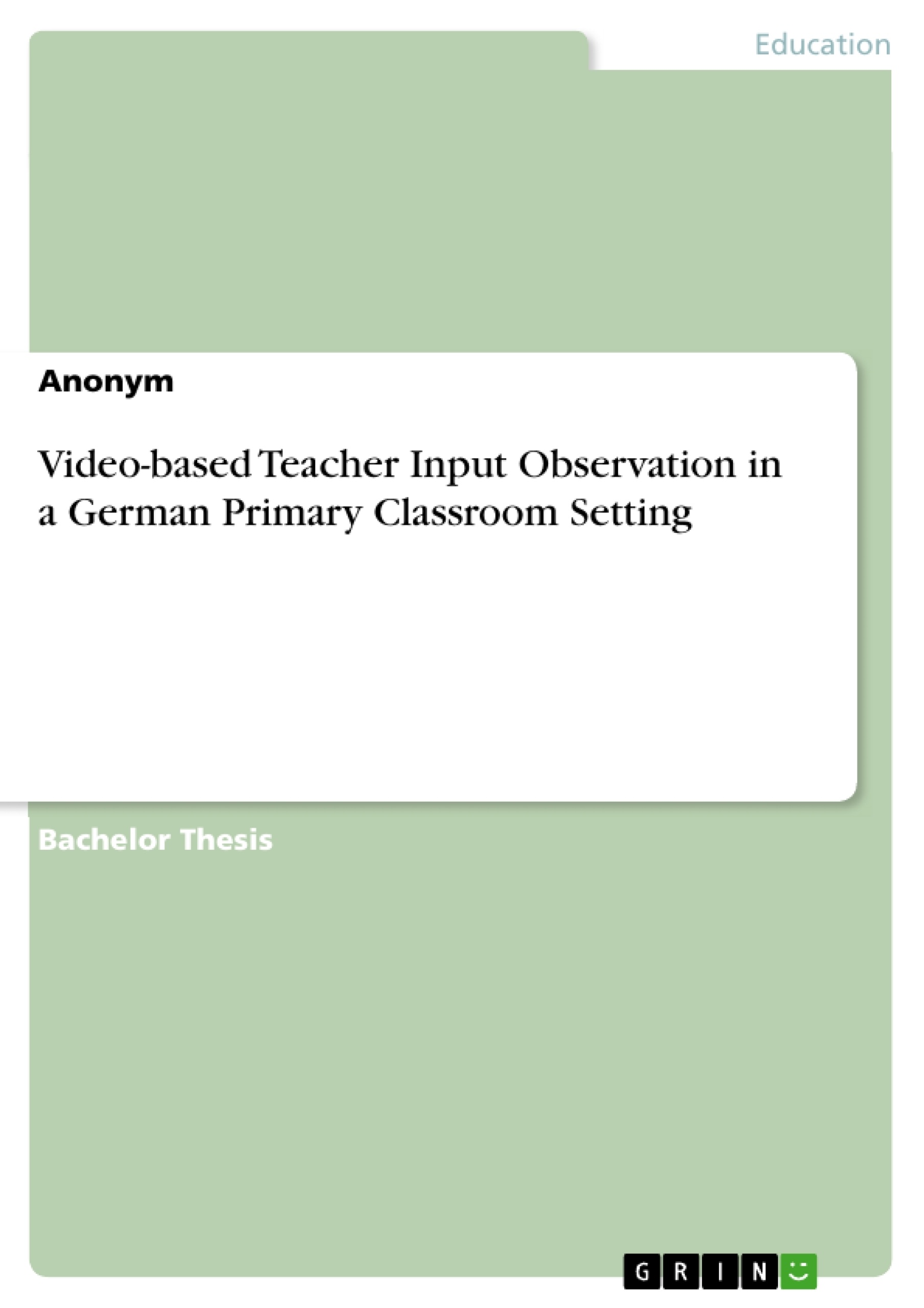Foreign language acquisition and learning plays a pivotal role in the educational system and is of great interest for empirical investigations (Mehisto et al. 2008). Research in this field is termed Second Language Acquisition (SLA). Ellis (2010) defines SLA as “the way in which people learn a language other than their mother tongue, inside or outside a classroom”. The aim of SLA research is to explain the processes that occur when learning another language after the native language and what factors influence them (Kersten 2019). Every learner has individual, internal prerequisites determined by his or her personality, language and cognitive skills (ibid.). Furthermore, external factors such as the family and the social environment or institutional factors, for example educational policies and school administration and the teacher’s personality and professionalism contribute to his or her success in learning a foreign language (ibid.). The teacher as an external factor is of major importance for the present study, in particular the quality of input given by him or her in different instructional settings.
Since “teaching is a complex interaction among teachers, students and content that no single measurement tool is likely to capture” (Archer et al. 2014), this study aims to identify differences in input quality between two teaching approaches by using the Teacher Input Observation Scheme (TIOS), an observation scheme which is currently in the developing phase at Hildesheim University. The study outcomes are anticipated to make a limited contribution to the context field of teacher education by providing a single-case data measurement of Teacher Input Quality (TIQ) regarding two different approaches to reading literacy.
Inhaltsverzeichnis (Table of Contents)
- 1. Introduction
- 2. Theoretical Background
- 2.1. Classroom Observation
- 2.2. Input Theories
- 2.2.1. Input Hypothesis
- 2.2.2. Interaction Hypothesis
- 2.2.3. Output Hypothesis
- 2.3. Input Quality
- 2.4. Videography
- 2.5. The Two Teaching Approaches: Synthetic Phonics and Whole Word
- 2.5.1. Synthetic Phonics in English-Speaking Countries and in the L2-classroom
- 2.5.2. Whole Word Approach
- 3. Empirical Study
- 3.1. Methodology
- 3.1.1. Research question, hypothesis and expected eutcome
- 3.1.2. Methodological approach
- 3.1.3. Subjects
- 3.1.4. Elicitation Procedure
- 3.1.4.1. Elicitation Instrument: Teacher Input Observation Scheme (TIOS)
- 3.1.4.2. Rating participants
- 3.1.5. Data Analysis
- 3.1.6. Methodological and Analytical Limitations
- 3.2. Research Results
- 3.2.1. Individual and Mean Percentage Scores of R1 and R2
- 3.2.2. Individual High-Inference Category Scores
- 3.2.3. Comparison of Mean High-Inference Category Scores
- 3.2.4. Statistical Significance
- 3.3. Discussion
- 3.1. Methodology
- 4. Conclusion
Zielsetzung und Themenschwerpunkte (Objectives and Key Themes)
This study aims to examine the quality of teacher input in two different teaching approaches: synthetic phonics and whole word. The research focuses on observing and analyzing the teacher’s input in a German primary school setting, using the Teacher Input Observation Scheme (TIOS). The study aims to identify differences in input quality between these approaches and contribute to the field of teacher education.
- Teacher input quality in different teaching approaches
- The role of classroom observation in teacher education
- Synthetic phonics and whole word approaches to reading literacy
- The Teacher Input Observation Scheme (TIOS) as a tool for measuring input quality
- Analysis of teacher input in a German primary school setting
Zusammenfassung der Kapitel (Chapter Summaries)
The first chapter introduces the topic of teacher input and its significance in second language acquisition. It highlights the complexity of classroom interactions and the importance of evaluating teacher input for improving teaching and learning. The chapter also outlines the structure of the thesis, dividing it into two sections: theoretical background and empirical study.
The second chapter delves into the theoretical background of classroom observation, input theories, and the concept of input quality. It defines key terms, explores relevant research, and discusses the use of videography for data collection. This chapter also provides detailed explanations of the two teaching approaches observed in the study: synthetic phonics and whole word.
The third chapter focuses on the empirical study, outlining the research question, hypothesis, and expected outcome. It describes the methodological approach, including the participants, data collection methods, and data analysis procedures. The chapter also addresses potential methodological and analytical limitations of the study.
The fourth chapter presents the research results, providing an analysis of the data gathered through the Teacher Input Observation Scheme (TIOS). It examines individual and mean percentage scores, high-inference category scores, and statistical significance.
Schlüsselwörter (Keywords)
Teacher input, classroom observation, second language acquisition, synthetic phonics, whole word, Teacher Input Observation Scheme (TIOS), input quality, primary school, German, videography.
- Quote paper
- Anonym (Author), 2019, Video-based Teacher Input Observation in a German Primary Classroom Setting, Munich, GRIN Verlag, https://www.grin.com/document/512660



